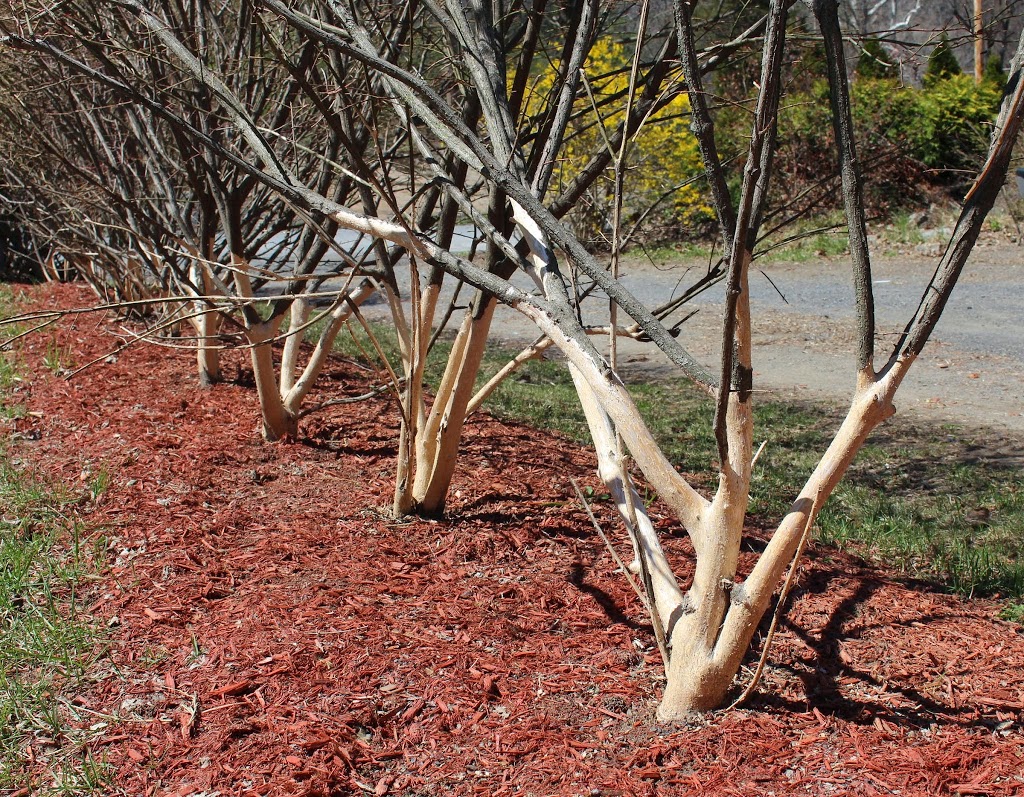Of Nuts & Mice
How could I resist? Road crews that had been trimming trees along power lines were finishing up work almost right in front of my house with a whole truckload of wood chips. Spreading chips had not been on my “to do” list; now it was, right after the crew graciously dumped contents of the truck in a space between my chestnut trees.
Chestnuts are trees of the forest. Mine, like many of those deliberately planted, have grass at their feet. The wood chips, I reasoned, would make the ground more home-like for the trees. Forest soils are typically overlaid with a layer of organic (that is, living or once living) materials: fallen leaves, twigs, limbs. These organic materials rot, in the process releasing nutrients as well as putting nutrients already in the soil in forms more readily accessible to plants. The organic feast encourages fungi, bacteria, and other soil life, all of which generally keep insect pests and diseases at bay.
In addition to nutritional and biological goodness, any organic material also brings physical goodness. Rainwater more easily percolates into the ground and, once within, the water is retained by the spongy, decomposed organic matter. At the same time, soil aeration is improved. It’s the best of of both worlds: more moisture plus more air at root level. No wonder I couldn’t resist.
People sometimes ask if I care what kind of chips I am getting. The answer is “no.” People sometimes ask if I’m worried about termites in the chips. Again, “no.” Termites require intact wood for their tunnels. What about “nitrogen tie-up,” which temporarily starves plants for nitrogen when high-carbon materials, such as wood chips, are added to the soil and microorganisms, which are better at garnering soil nitrogen than are plants, go to work. Again, I’m not concerned. Nitrogen tie-up only occurs if chips are mixed INTO the soil, promoting rapid decomposition.
Some people believe in using gourmet chips, also known as ramial chips, which means , according to chip aficionadas, wood chips made from branches no larger than 2-3/4 inches in diameter, and preferably from deciduous trees. So before I had my load of chips dumped I had the road crew climb into their truck to separate out the good from the bad chips — just kidding! There’s not much, actually nothing at all, to support chip aficionadas’ claims. I’ll take and took any and all chips.
Come autumn, perhaps I’ll round out the soil diet with a load of leaves.
————————————————
I am a big fan of black walnuts. Last autumn’s harvest has been cracked, shelled and squirreled away to enjoy in the months ahead. The latest buzz on black walnuts, though, is about their sap, which reputedly boils down into a tasty syrup, similar to maple syrup.
Almost all parts of walnut trees contain a compound, juglone, that is toxic or growth-stunting to many types of plants. This makes me wary about ingesting the sap, especially after it has been concentrated into a syrup.
Still, curiosity got the upper hand so I put a tap into a black walnut tree a few weeks ago, gathered sap, and then boiled it down into a syrup of similar consistency to maple syrup.
My report: Very good flavor, slightly different from maple sugar, perhaps with a hint of black walnut flavoring. (The latter could be my imagination.) And I’m still alive.
————————————————
One of the last legacies of winter are the “bare ankles” at the bases of some trees and shrubs. Bare because they have no bark.
Those bare ankles are the handiwork of mice. Snuggled beneath the snow, warm and safe from aerial predators, mice could munch away to their heart’s content on bark. The problem is that the bark layer is where nutrients and water are conducted up from the roots and down from the leaves.
Stripped stems will likely die, which could mean death for the whole plant if it’s a tree, it’s young, and it was weak. Or if it’s a species that does not sprout readily when cut back. Otherwise, new sprouts will grow from below the stripped region. If the plant is a tree, the most vigorous of the new sprouts can be trained as a new trunk. If the plant is a shrub, new sprouts will fill in.
No need to sit back and bemoan the damage. Bridge grafting, whereby lengths of stem are grafted below and above the stripped area, will repair damage. And a good cat will avert it in the first place.



